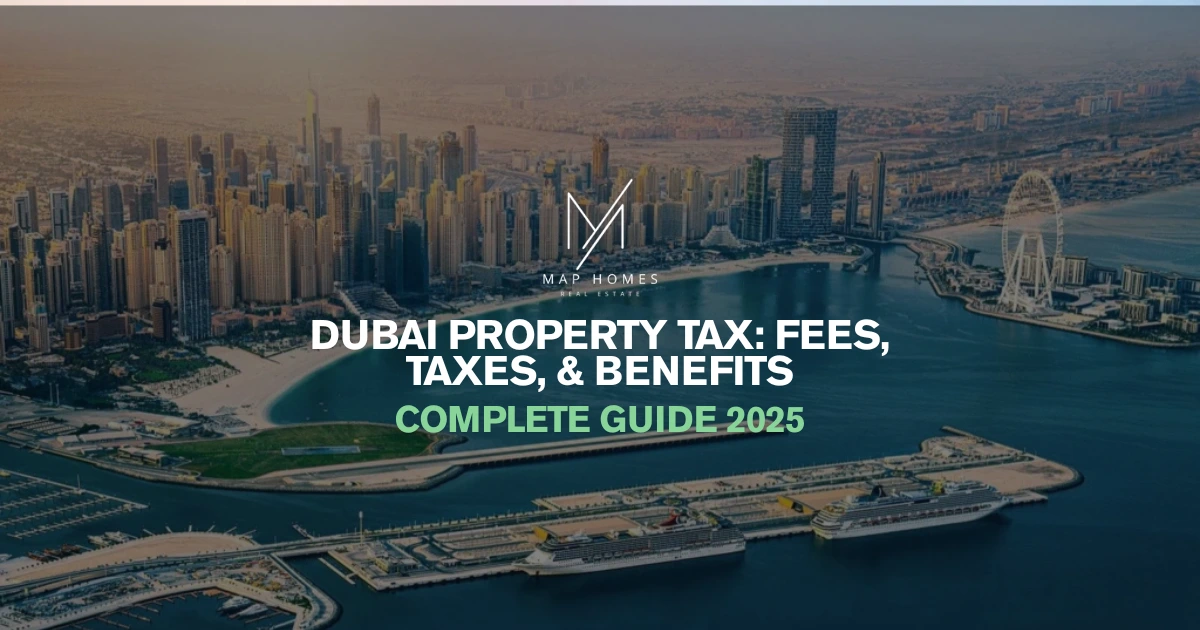Now Reading: UAE Real Estate: 6 Smart Tax Planning Tips for REITs in 2025
-
01
UAE Real Estate: 6 Smart Tax Planning Tips for REITs in 2025
UAE Real Estate: 6 Smart Tax Planning Tips for REITs in 2025

Table of Contents
Smart Tax Planning Tips: The UAE’s real estate market, valued at AED 958 billion in 2024, grew 23.9% year-on-year, with Real Estate Investment Trusts (REITs) gaining traction due to their 7–9% yields and liquidity, per gtlaw.com. The introduction of a 9% corporate tax (CT) in June 2023 under Federal Decree-Law No. 47, alongside no personal income or capital gains tax, shapes REIT tax strategies, per kpmg.com.
REITs, regulated by the Dubai Financial Services Authority (DFSA) and Securities and Commodities Authority (SCA), benefit from partial CT exemptions, per damacproperties.com. With 85% of investors leveraging tax incentives, per jaxaauditors.com, strategic planning is critical. This article outlines six smart tax planning tips for UAE REITs in 2025, with U.S. investor considerations, using web insights.
UAE Tax Framework for REITs

UAE REITs face a 9% CT on taxable income above AED 375,000, but only 80% of real estate income is taxable, per taxsummaries.pwc.com. Key features:
- Taxable Income: Rental income, property sales, and dividends, less allowable expenses (e.g., management fees, maintenance).
- Exemptions: Residential property sales by individuals are CT-exempt; REITs with <10% real estate assets qualify as Qualifying Investment Funds (QIFs), per czta.ae.
- VAT: Residential leases are VAT-exempt; commercial leases incur 5% VAT, recoverable if tenants are VAT-registered, per corporatetaxation.ae.
- Compliance: Register with the Federal Tax Authority (FTA) by December 31, 2025, for 2024 fiscal years; file returns by September 30, 2025, per hawksford.com.
6 Smart Tax Planning Tips for REITs in 2025
1. Leverage Partial CT Exemption for REIT Income
REITs are taxed on 80% of real estate income, with 20% exempt if distributions meet DFSA/SCA requirements (e.g., 80–90% annual payouts), per damacproperties.com. This reduces effective CT rates.
- Impact: On AED 1 million income, AED 200,000 is exempt, saving AED 18,000 in CT (9% of AED 200,000).
- U.S. Consideration: Report distributions on Form 1040; align with IRS REIT rules.
- Action: Ensure high distribution ratios; verify compliance with FTA via firms like Reyson Badger.
2. Optimize Free Zone Operations as QFZP

REITs operating in free zones (e.g., Dubai International Financial Centre) meeting Qualifying Free Zone Person (QFZP) criteria face 0% CT on qualifying income, per taxsummaries.pwc.com. Non-qualifying income (e.g., mainland rentals) is taxed at 9%.
- Impact: A REIT with AED 5 million in free zone rental income saves AED 450,000 in CT, maintaining 7–9% yields.
- U.S. Consideration: Report income on Schedule E; assets on Form 8938.
- Action: Maintain substance (employees, assets); register QFZP status with FTA.
3. Maximize Allowable Deductions
Deduct expenses like property management fees, maintenance, marketing, and financing costs to reduce taxable income, per jaxaauditors.com. Interest deductions are capped at 30% of EBITDA for loans above AED 12 million, per czta.ae.
- Impact: A REIT with AED 2 million income and AED 500,000 expenses reduces taxable income to AED 1.5 million, saving AED 45,000 in CT.
- U.S. Consideration: Deduct expenses on Schedule E; align with IRS Form 4562 for depreciation.
- Action: Track expenses via audited financials; consult advisors like Spectrum Auditing.
4. Utilize Energy-Efficient Tax Credits
REITs investing in solar panels, energy-efficient appliances, or water-saving systems in properties can claim emirate-specific tax credits, per corporatetaxation.ae. This aligns with UAE’s Net-Zero 2050 goals.
- Impact: Saves AED 50,000–100,000 per project, boosting net yields by 0.5–1%.
- U.S. Consideration: Analogous to U.S. credits; report on Form 5695.
- Action: Obtain certifications; verify emirate guidelines (e.g., Dubai Municipality).
5. Structure as a Qualifying Investment Fund (QIF)
REITs with diversified portfolios (<10% real estate assets) may qualify as QIFs, exempt from CT, per taxsummaries.pwc.com. This suits REITs with mixed assets (e.g., equities, bonds).
- Impact: A QIF REIT with AED 3 million income saves AED 270,000 in CT.
- U.S. Consideration: Report income on Form 1040; align with IRS fund rules.
- Action: Diversify asset allocation; apply for QIF status via FTA.
6. Manage VAT on Commercial Properties
Commercial rental income incurs 5% VAT, recoverable if tenants are VAT-registered, per corporatetaxation.ae. Residential rentals are VAT-exempt, preserving yields for residential-focused REITs.
- Impact: On AED 1 million commercial rent, AED 50,000 VAT is recoverable, maintaining 7–9% yields; non-recoverable VAT reduces yield by 0.5%.
- U.S. Consideration: Report income on Schedule E; no U.S. VAT impact.
- Action: Confirm tenant VAT status; file quarterly VAT returns with FTA.
Quantitative Impact on REIT Returns
Consider a REIT with a AED 10 million portfolio yielding 8% (AED 800,000 annually):
- Standard CT: After AED 200,000 expenses, taxable income is AED 600,000. With 20% exemption (AED 120,000), taxable income is AED 480,000. CT on AED 480,000 – AED 375,000 = AED 105,000 is AED 9,450, reducing yield to 7.91%.
- QFZP Free Zone: AED 800,000 income incurs 0% CT, maintaining 8% yield.
- QIF Status: AED 800,000 income is CT-exempt, preserving 8% yield.
- Commercial VAT: AED 500,000 rent with non-recoverable AED 25,000 VAT reduces yield from 8% to 7.5%.
Key Considerations for U.S. Investors
- Risks:
- Non-Compliance: Fines up to AED 500,000 for late FTA filings, per jaxaauditors.com.
- Oversupply: 14,000 units planned for 2026–2029 may soften yields by 0.5–1%, per omniacapitalgroup.com.
- Costs: 4% transfer fees add AED 40,000–80,000 per transaction.
- Tax Compliance: UAE’s 0% personal income/capital gains tax applies for individuals; REITs face 9% CT on 80% of income. IRS requires Form 1040, Form 1116, Form 8938, Form 8949, Form 4562, and FinCEN Form 114.
- Regulatory Compliance: DFSA/SCA mandates annual audits; FTA requires seven-year record retention.
- Currency Stability: AED pegged at 1 USD = 3.67 minimizes risk.
Conclusion
In 2025, UAE REITs can enhance 7–9% yields in a AED 958 billion market by leveraging six tax planning tips: partial CT exemptions, QFZP incentives, deductions, energy-efficient credits, QIF status, and VAT management. U.S. investors, navigating IRS compliance and UAE’s tax-friendly regime, can optimize returns by partnering with firms like Reyson Badger or Hawksford for FTA and DFSA compliance. Smart Tax Planning
read more: Understanding Corporate Tax Impact on UAE Rental Income Returns in 2025






















